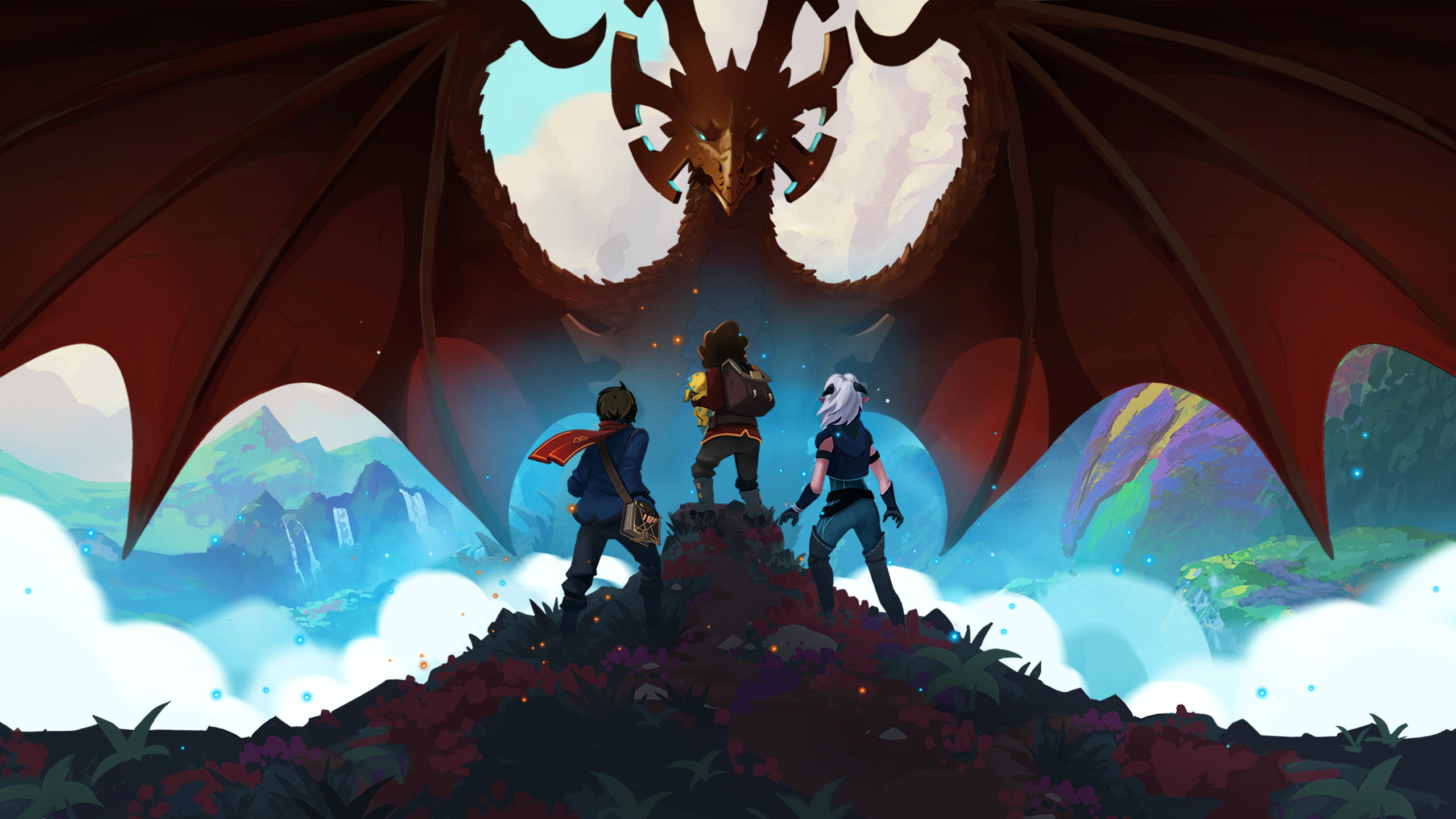Table of Contents Show
As announced at Comic-Con earlier this year, Netflix’s The Dragon Prince has been renewed for another four seasons (( Jake Kleinman, “The Dragon Prince Reveals Some HUGE Season 4 News at Comic-Con Panel,” Inverse, July 24, 2020.)) . Brought to life by the creators of Avatar: The Last Airbender, the show is worthy of continuation but far from the quality of its predecessor.
Part of this quality gap is the differences in setting. Instead of the concrete and creative world of Avatar, The Dragon Prince features hit-or-miss worldbuilding that is wonderfully detailed in some areas and flimsy in others. Although The Dragon Prince lacks originality in its setting and magic, its detail and inclusivity cultivate an interesting feel for an otherwise mundane world.
A Magical World, Split In Two
The Dragon Prince takes place in Xadia, a world divided by an ancient war. In Xadia, magic can come from one of six sources: the sun, the moon, the stars, the sky, the oceans, and the earth. However, humans invented dark magic because they could not draw power from natural sources. This use of dark magic started a war between elves, dragons, and humans, which resulted in humans’ banishment to the west.
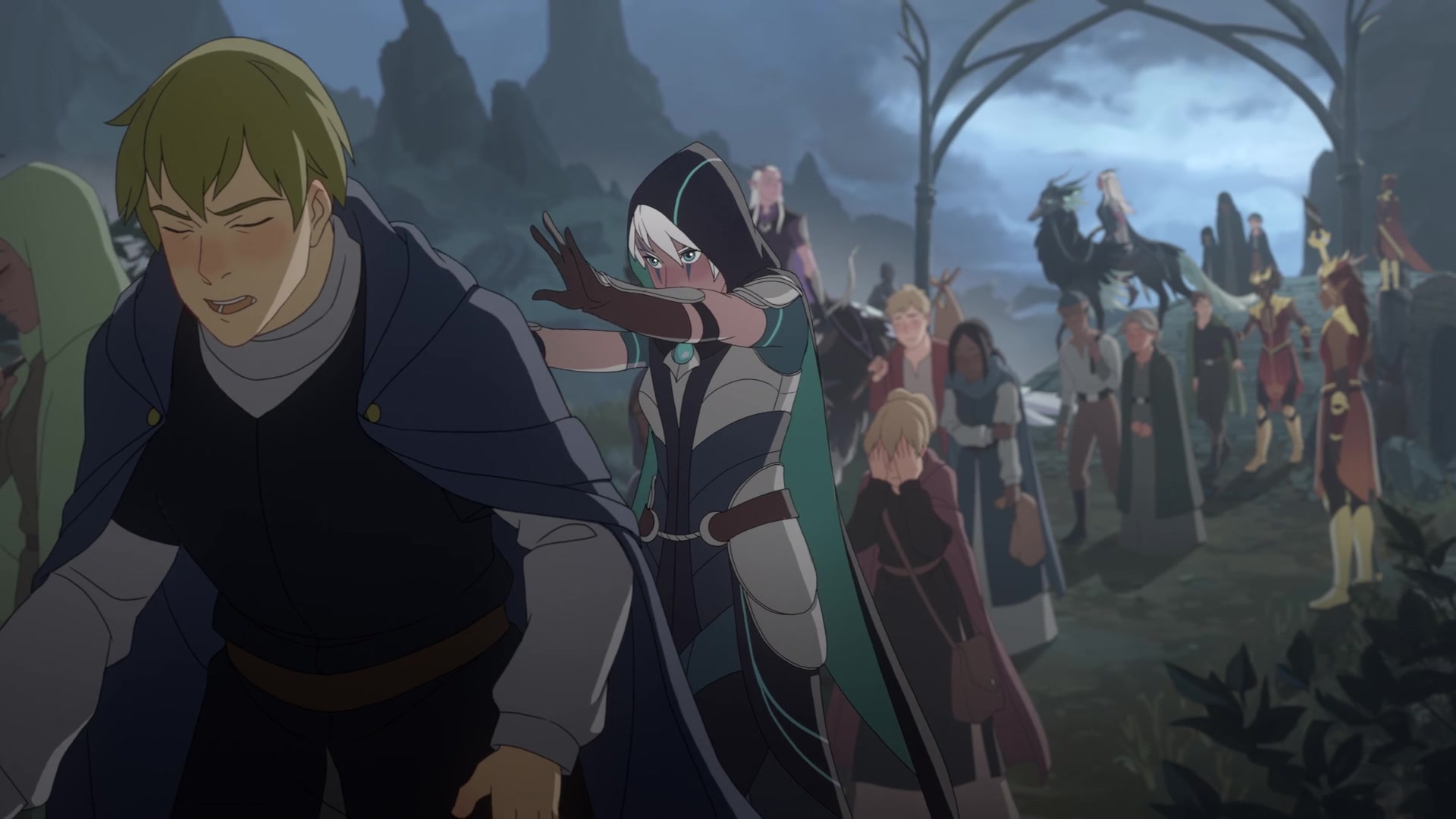
The border is guarded by the ferocious king of the dragons. Just months before the start of the story, the dragon king was killed by humans, who also destroyed his only egg. The series begins with a group of elf assassins, whose goal is to kill a human king and his young son in retaliation. One of them discovers that the egg was never destroyed, so she teams up with the prince and his half-brother to return it to the dragon queen. The audience follows them through a fantasy world that is punctuated by points of interest but is ultimately too familiar.
Generic Fantasy Concepts
At first glance, this seems like a strong concept. The show begins with a discrete magic theme, an interesting conflict, and a clear goal for the main characters. However, this excellent framework is sabotaged by a bland setting and a vague magic system.
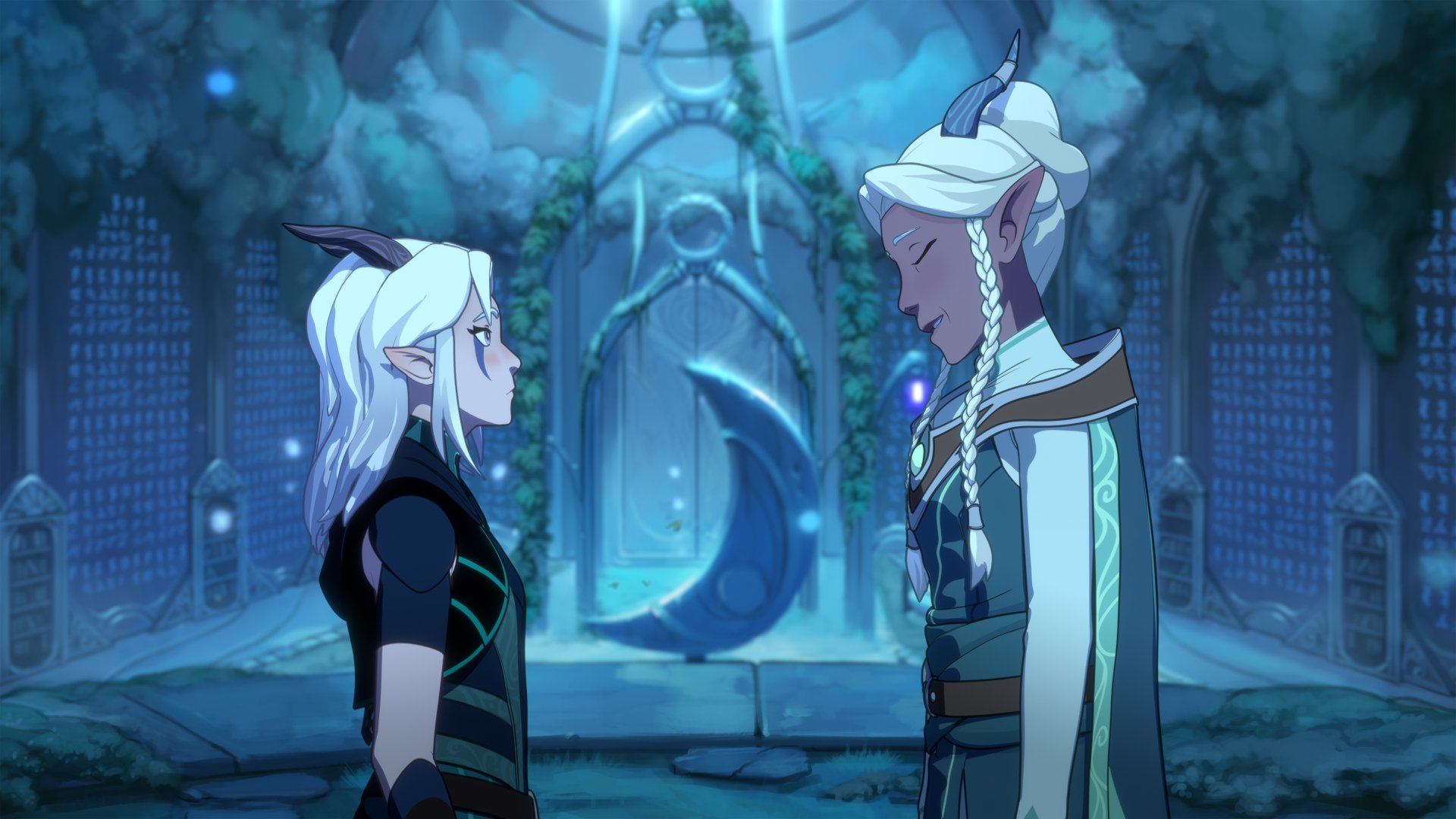
Despite a few interesting locations, the world of Xadia is as dull as the three-minute narration that introduces it. The human kingdoms are more or less the same as the real world, and even the magical elven lands cobble together a few half-hearted fantasy cornerstones like giant trees and excessive toadstools. This, along with a generic and inconsistent magic system, prevents the setting from having a completely original feel.
An Indistinct Setting
Setting is one of a fantasy story’s most crucial elements, and The Dragon Prince struggles to establish something truly novel. During the first two seasons, the characters travel through the human lands on their way to the border. Most of this involves walking through a normal-looking forest and talking about how magical Xadia is. When the characters actually get there in season three, this buildup falls flat. Although Xadia is more interesting than the human kingdoms, its overall aesthetic is mundane with a sprinkle of whimsy.
This becomes painfully apparent as the characters make their way to the home of the Moonshadow elves. Instead of a bioluminescent lunar woodland, they walk through a somewhat regular forest with oversized trees, some glowing ferns, and a serious mushroom infestation. Some of the animals are quite interesting, but much less thought went into the vegetation. Plants like “melodaisies,” “adoraburrs,” and “flatulilies” don’t fit the setting as a whole and appear to exist solely for the sake of puns.
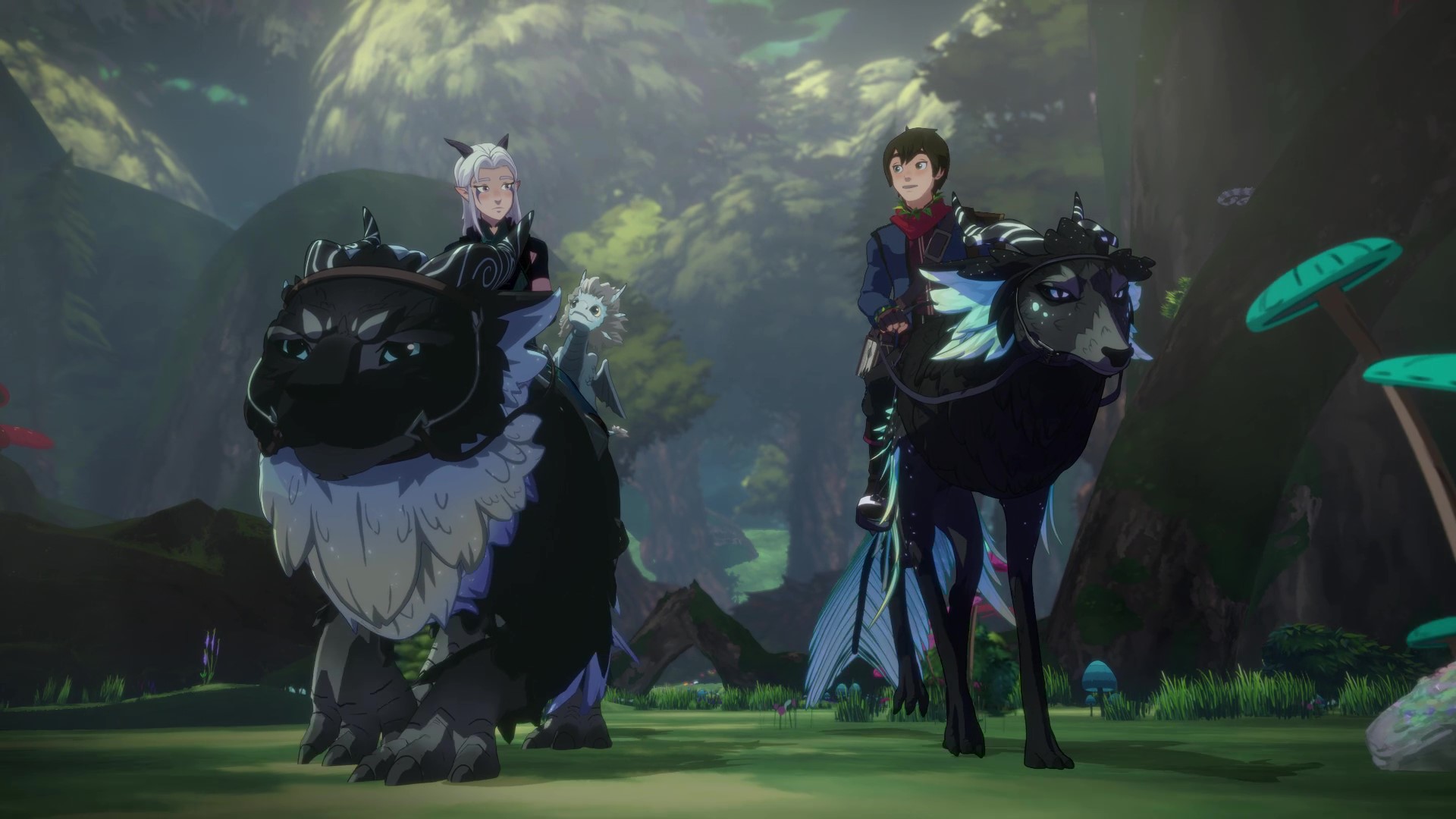
This setting is particularly disappointing because the creators gave themselves a strong theming device: the six types of magic. Unique biomes based on each category would have cemented this theme and made Xadia memorable, but the world we see is a collection of normal environments adorned with typical fairytale elements.
Muddled Magic System
The magic system better incorporates the six categories, but this still fails to impress. The mechanisms behind spellcasting are neither imaginative nor consistent. Mages must draw a rune in the air and say an incantation to cast a spell. This borrows heavily from magic systems like Harry Potter, but at least the rules are clear-cut. Yet as the story continues, the workings of magic become vaguer and vaguer. One mage is able to create illusions without casting any spells whatsoever, and some elves are shown to have innate powers that don’t fit with the soft magic system.
Furthermore, the role of the six magic sources is poorly defined. It is implied that certain spells correspond with certain magic types. For example, wind and lightning spells are considered part of sky magic. But at one point, a character explains that a mage can link an object to a person and enchant that object to sink and float depending on whether the person is dead or alive. This type of magic seems too complex to be performed by a single spell, let alone by any one category.
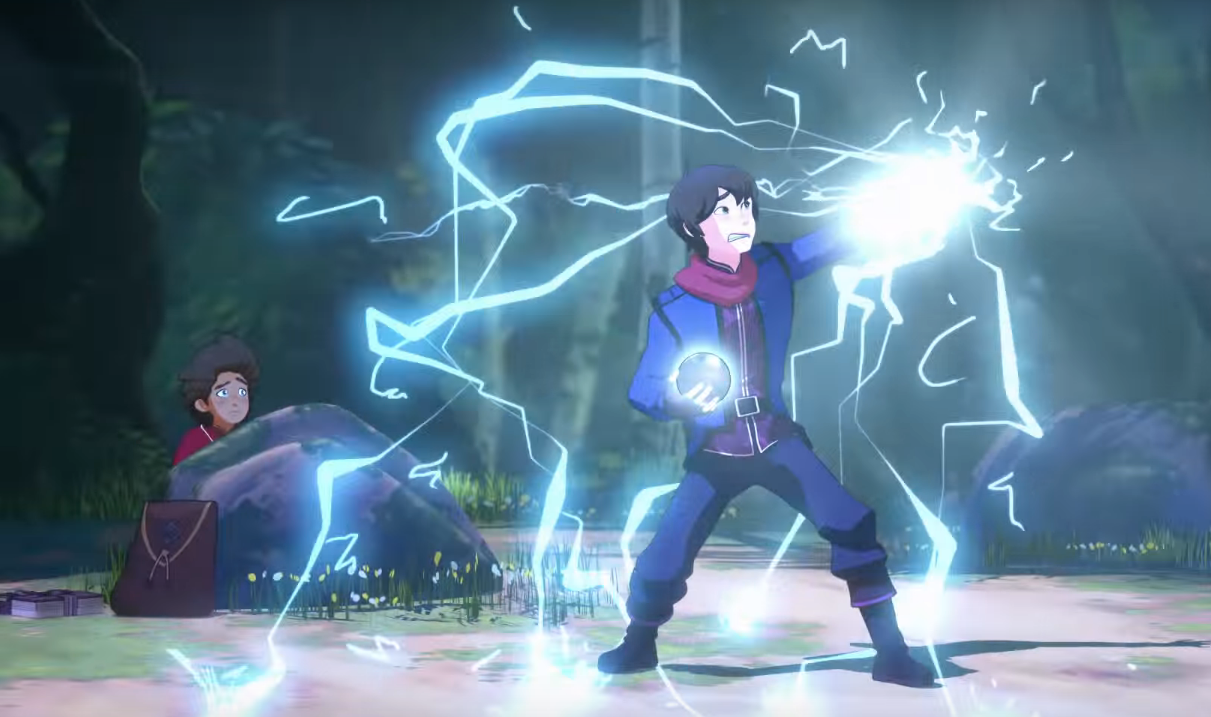
The Dragon Prince starts with something interesting, the six categories of magic, but drags it through a soft magic system that makes magic use both extremely specific and extremely vague. Soft magic systems can work, of course, but they should be either more specific or backed up by a setting that supports their whimsy. Overall, the show’s system isn’t intuitive, and this vagueness prevents the worldbuilding from feeling particularly original or concrete.
Inexplicably Evil Magic
Perhaps the most egregious example of overused worldbuilding is The Dragon Prince’s incorporation of dark magic. This term is widely used in fantasy, and true to tradition, the show doesn’t take much time to explain why dark magic is so bad. Dark mages must use ingredients taken from magical creatures, but this isn’t as evil as the show suggests. There is no explanation for why this can’t be done humanely, or why it is any different from killing animals for food, especially given the life-saving benefits dark magic has. This is even more perplexing given that neither dragons nor elves have a problem taking innocent human lives.
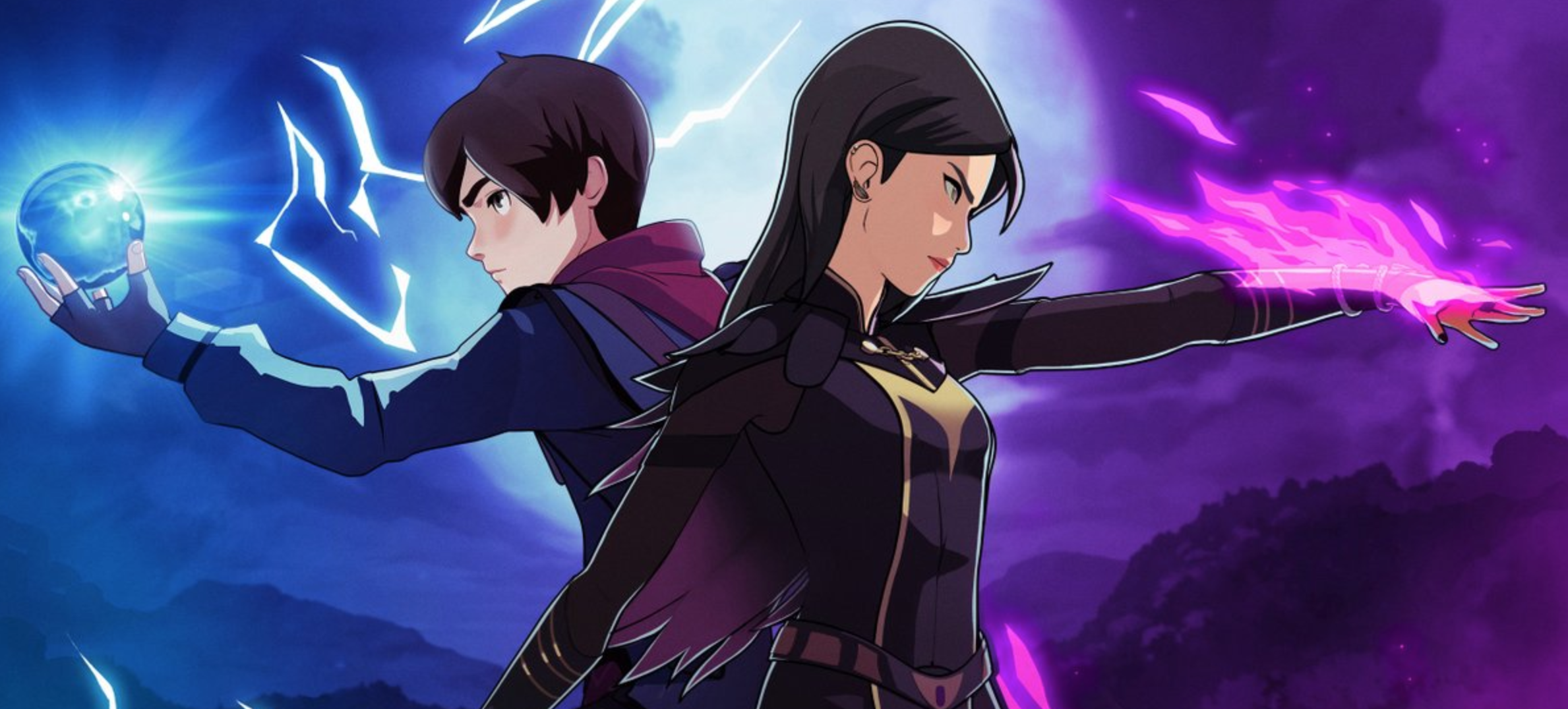
Even without logical flaws, the concept of dark magic doesn’t fit in the world of The Dragon Prince. Despite the name, dark magic has nothing to do with shadows or concealment. Its applications vary wildly, from tracking spells to healing magic. Even with their inconsistencies, the other types of magic are much more specific in their uses. Dark magic might intentionally clash to highlight how unnatural it is, but in that case, it would benefit from a deeper explanation.
As it stands, dark magic is too tame to add a compelling moral question and too broad to make it anything more than another cliché. In addition to the weak setting and confusing magic system, dark magic marks a third strike on the show’s concept.
A Fresh Spin On Fantasy Tropes
Despite these worldbuilding flaws, the show’s saving grace is the distinctiveness of its inhabitants. Xadia itself might not be terribly creative, but the same cannot be said about its wildlife. Many of the show’s animals are much more memorable than their surroundings, like the gargantuan, giraffe-like ambler and the beautiful moon-phoenix.
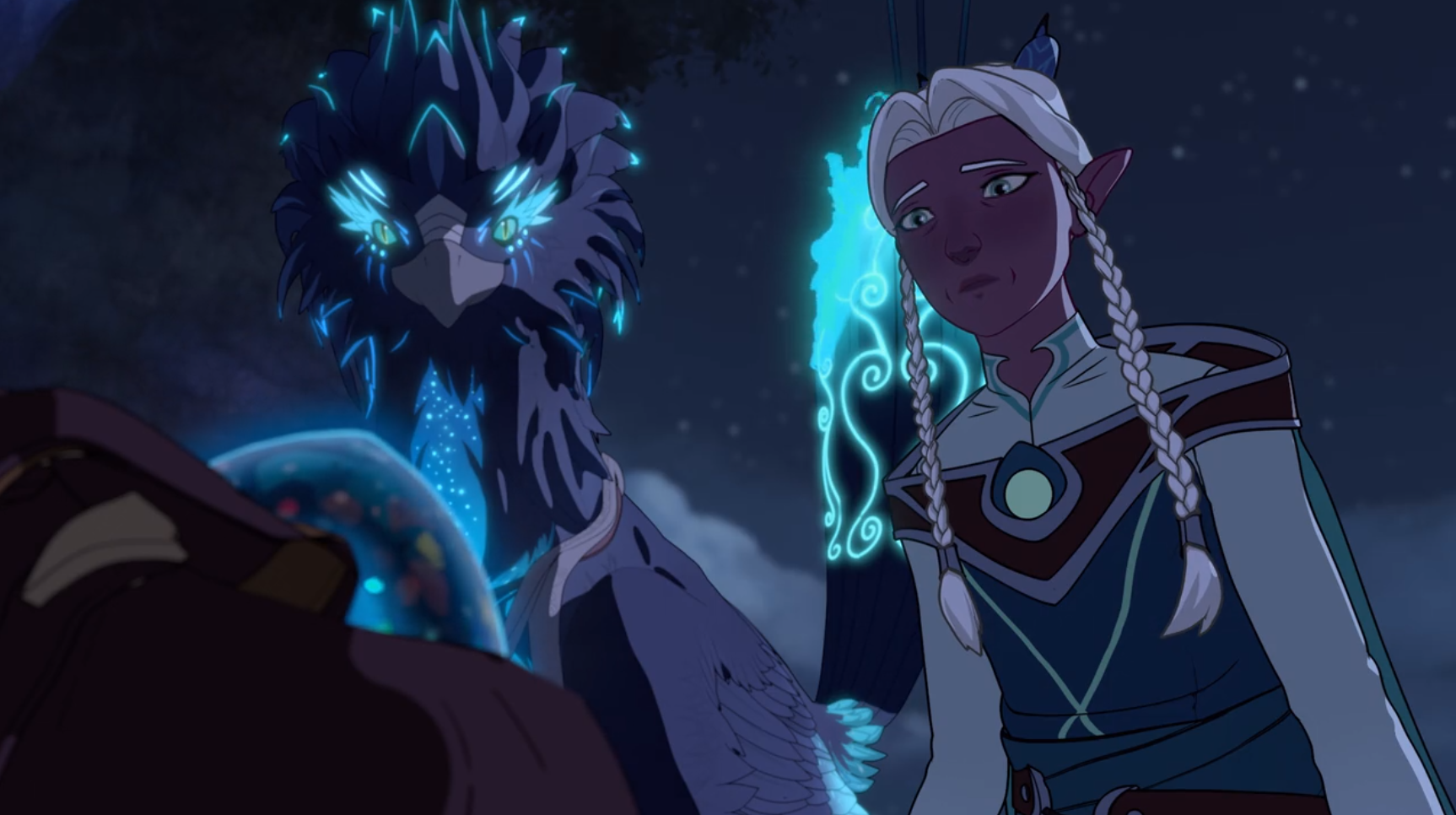
This focus on fascinating creatures extends to the elves and dragons, who are given unique societies and personalities. In addition to a diverse cast of characters, this attention to detail helps make up for the unoriginal aspects of the show.
Focused Worldbuilding
One of The Dragon Prince’s most compelling features is its interpretation of elves. Elves are a classic fantasy staple, but those of The Dragon Prince are much more interesting than the usual portrayal. Although they do feature the obligatory pointy ears, they also have horns, facial markings, and only four fingers. There are six types of elf, which correlate with the six sources of magic and provide a strong basis for differentiation.
Moonshadow elves live in a lush forest, and Sunfire elves build glittering, golden cities. They can be aggressive and vengeful as well as kind and brave. This variation brings something fresh to the stale portrayals usually shown in fantasy.
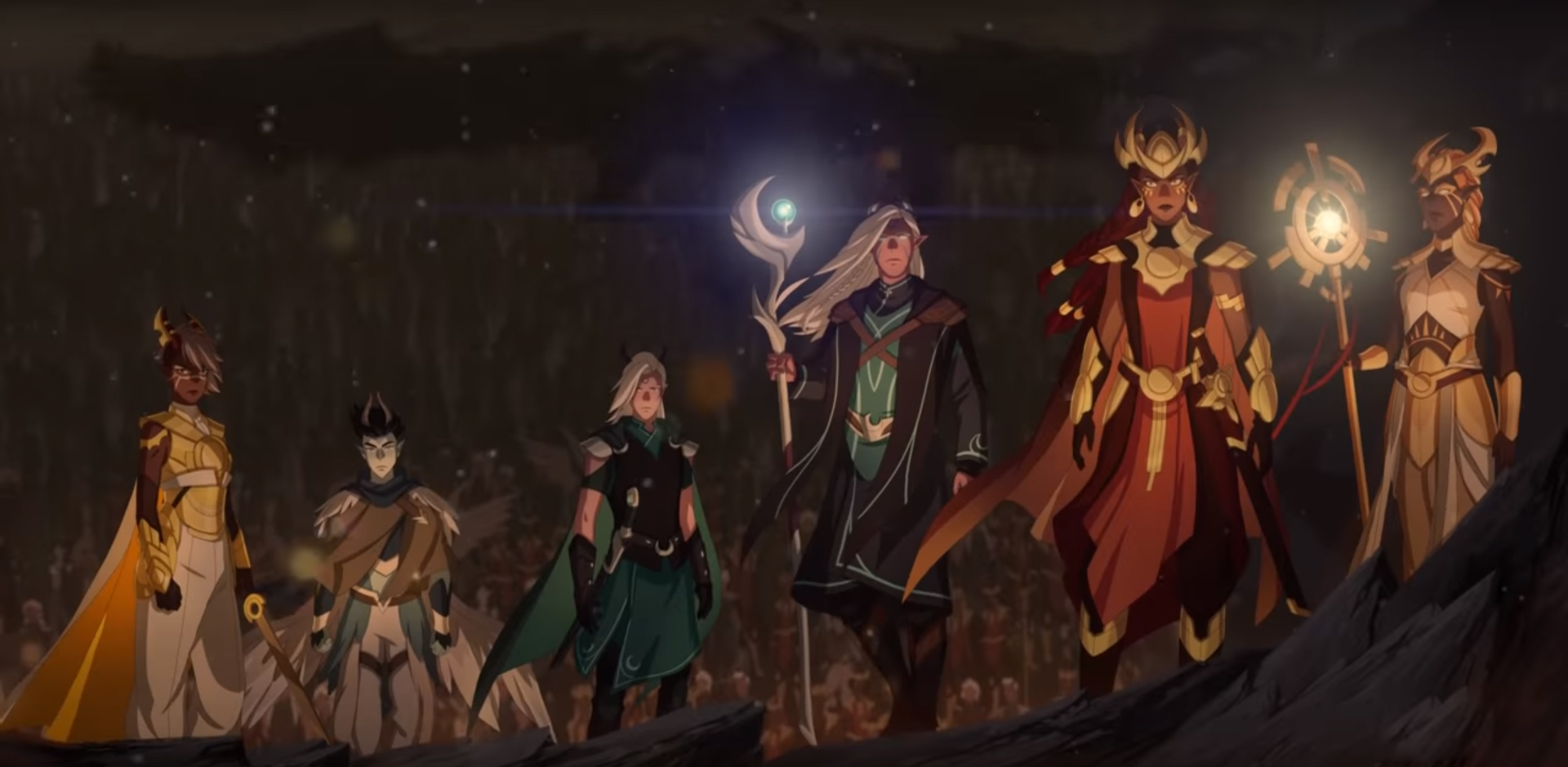
Even though the show uses typical fantasy species like elves, humans, and dragons, so far it lacks orcs and dwarves and other Tolkienesque creatures. This prevents the setting from feeling like a complete rehash and ensures that each species is developed thoroughly. Elves and humans aren’t just monolithic groups; each species has different kingdoms and cultures that add more flavor to the world. The show also includes sapient dragons with the same complex motivations and emotions as its other characters. Not much is shown about them and their societies, and they don’t appear to have the same strong theming as the elves, but the agency and intelligence they possess are remarkable.
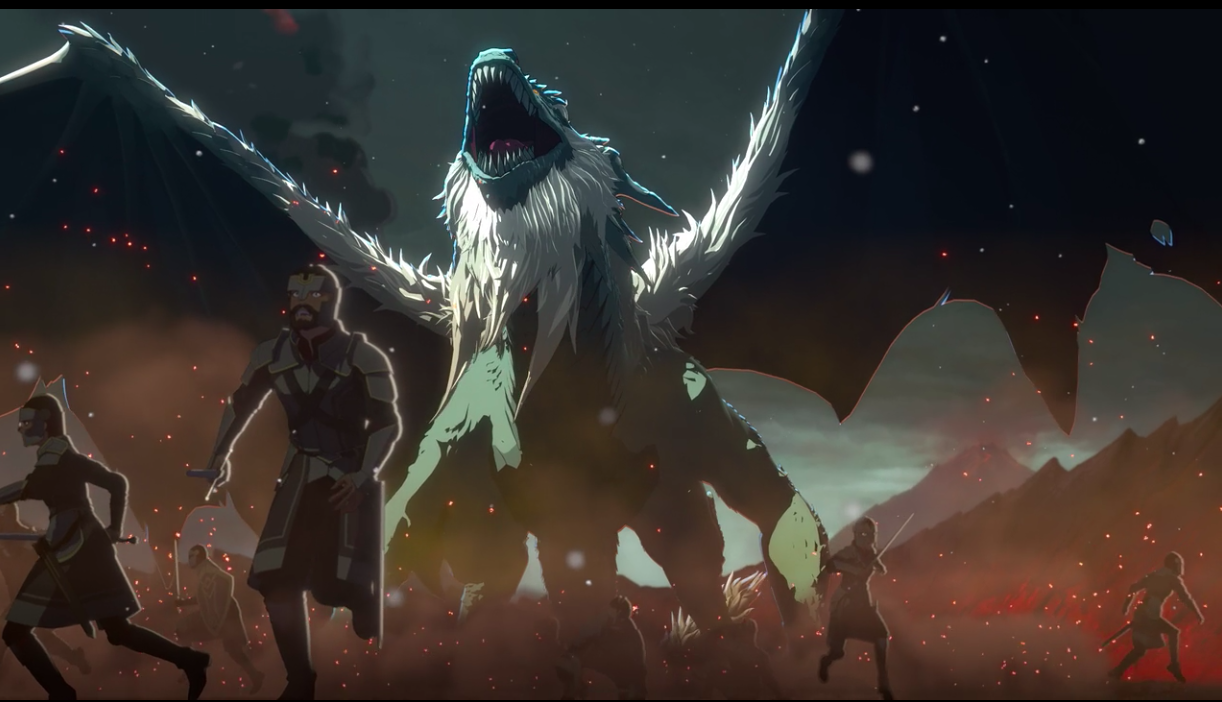
The dragons’ side with the elves in the war against humans, so overall they aren’t friendly towards the characters. However, this isn’t because they are greedy, evil beasts put in the story so that the protagonists will have something to kill. Just like all the other characters in the story, the dragons are responding to centuries of convoluted morality and injustice. Most fantasy stories portray dragons as either obstacles or steeds, so this refreshing picture of these familiar creatures contributes to The Dragon Prince’s intrigue.
Inclusive Fantasy
The Dragon Prince also distinguishes itself by being inclusive. The show is much more racially diverse than many others of its genre and includes several important characters of color. The elves featured in the show also have a wide variety of skin tones, even within the same type. Diversity is present in background extras as well as the main cast, which helps normalize it on all scales. Although characters of color aren’t as prominent as they could be, this inclusion is a step forward from the overwhelmingly white stories that previously dominated fantasy.
A stark rejection of sexism also helps The Dragon Prince stand out. Active and important female characters are shown in a variety of roles, both positive and negative. They are given distinct and diverse strengths, vulnerabilities, and personalities. Fantasy is notorious for sexualizing its women. The Dragon Prince avoids this mostly by being a children’s show, but it also lacks the G-rated objectification that often sneaks into kids’ media. There are no slow-motion hair flips or exaggerated features that place gratuitous emphasis on female characters’ attractiveness.
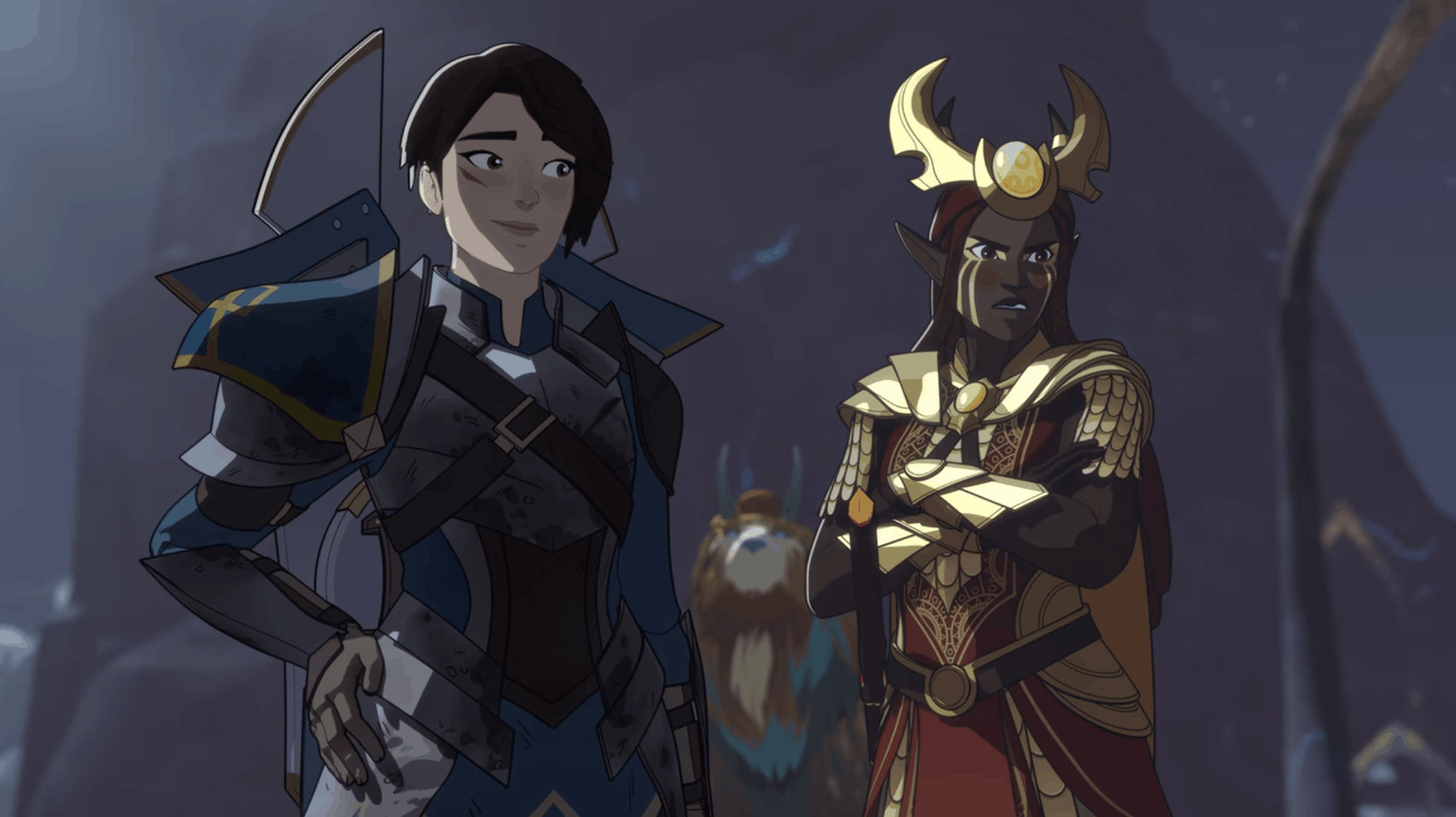
The Dragon Prince doesn’t stop there. It also deserves mention for its inclusion of independent and interesting disabled characters, as well as its LGBTQ+ representation. The show has included two lesbian queens and a gay elf couple, and both pairings feature an on-screen kiss. This alone isn’t revolutionary, but it is remarkable for a children’s show. Given the events of season three, there might even be a more central lesbian pairing in upcoming seasons. The Dragon Prince’s breadth of representation is a refreshing break from the homogenous casts of most mainstream fantasy.
A Partial Success
As an unofficial successor to Avatar: The Last Airbender, The Dragon Prince has a lot to live up to. Unfortunately, it does not quite manage to create a grounded and unique setting like Avatar’s. Xadia’s setting ignores pre-existing themes in favor of generically whimsical environments. Furthermore, the magic system is both insipid and confusing.
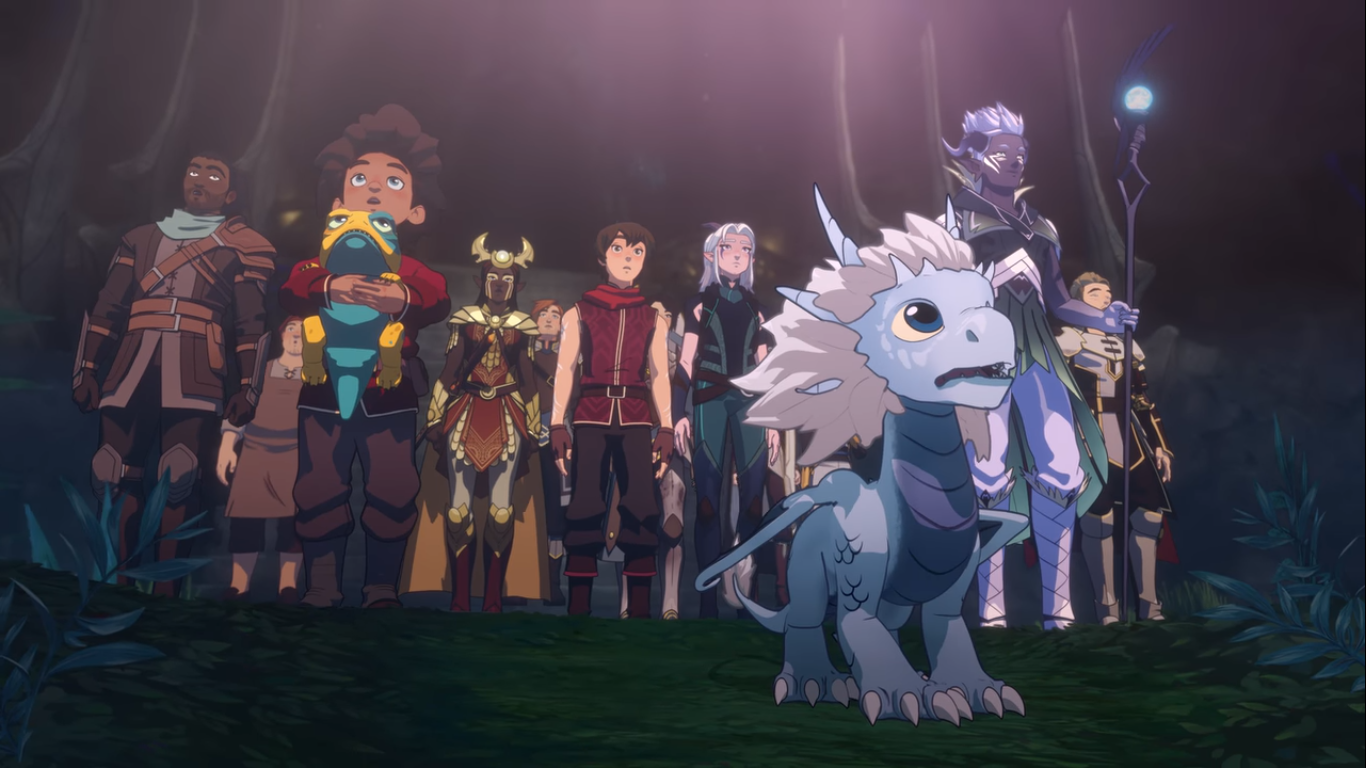
However, the show still has potential. Although The Dragon Prince does draw from some derivative fantasy staples, it manages to develop them into something more distinct. The elves in the story are much more diverse and interesting than most interpretations, as are the human characters. The show also takes major steps forward in terms of respectful representation of marginalized groups. While The Dragon Prince’s worldbuilding is underwhelming in some ways, its fresh vision of fantasy ultimately makes it worth the watch.
